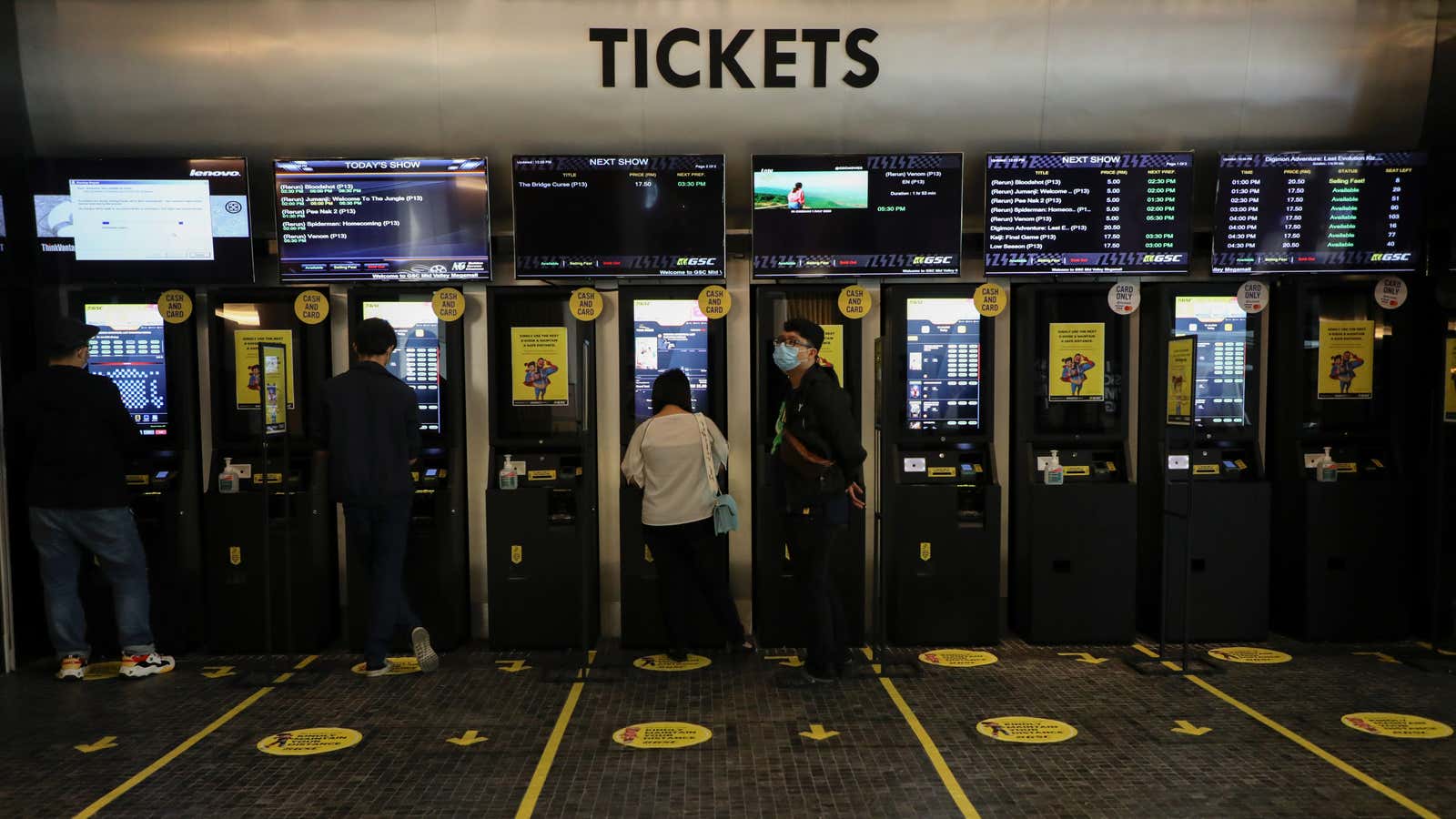2020 was a mess for movie theaters. The pandemic led to a massive decline in global ticket sales due to government-mandated theater closures and people’s fears of contracting the novel coronavirus in enclosed spaces.
But even before Covid-19, the movie theater industry was changing. The North American market, classified as the US and Canada, has been the world’s largest for decades. That was true in 2019, with the two countries netting a combined $11.4 billion in box office revenues (The US and Canada are often analyzed as one market by movie financial analysts). But revenues from North America have shown little growth over the last decade, and the rest of the world is catching up. This means an increasingly globalized theater market, and a Hollywood incentivized to make movies to appeal to the world’s emerging markets, not just Americans.
China, in particular, has been coming on strong. The country’s box office grew to $9.3 billion in 2019 from about $6.8 billion in 2015, according to data from the European Audiovisual Observatory’s annual report (paywall).
China’s growing middle-class and burgeoning capacity for producing domestic blockbusters, like The Wandering Earth, has led to soaring movie attendance. In 2020, China is likely to be the world’s number one theater market because, unlike in the US, Covid-19 transmission is under control and many people have returned to the theater. Just like most other major markets, the Chinese movie theater industry now has to compete with increased streaming options, but up this point, the overall market is expanding enough for both theaters and streaming services to thrive.

China is not the only major Asian market showing growth. The combined box offices of Japan and South Korea grew by almost 30% from 2015 to 2019. Shinnosuke Takeuchi, an entertainment analyst with the investment bank Jefferies, told the Hollywood Reporter that Japan’s box office surge may in part be a result of increased leisure time for the country’s adults due to government reforms encouraging workers to make more time off.
South Korea’s expanding box office is partly explained by the country’s exploding film industry—502 South Korean-made films were released in 2019, compared to just 232 in 2015. With more local big budget options, such as the 2019 hit Extreme Job, South Koreans are increasingly likely to head to the theaters.
The North American box office, on the other hand, has been flat for years. Bruce Nash, the editor and founder of movie financial data website The Numbers, tells Quartz the only reason the region’s box office hasn’t declined over the last five years was a set of blockbusters made by Disney that are particularly suited to the big screen, including the Marvel and Star Wars films.
Nash sees the huge box office returns from movies like Avengers: Endgame, Black Panther, and Star Wars: The Rise of Skywalker as a “bit of a bubble,” and expects to see a decline after the pandemic ends compared to the late 2010s. The EU box office has also been propped by these US-made megahits. In 2019, all 10 of the highest grossing movies in Europe were made in the US, according to the European Audiovisual Observatory’s data.
Though the box office grew slightly for the US and Canada from 2015 to 2019, the number of admissions actually fell by 6%. It was only because of rising ticket prices that theater revenues didn’t fall. China, by comparison, saw box office and admission rise at about the same rate.
The US, EU, China, Japan, and South Korea made up about 77.5% of all box office revenues in 2019. At $1.6 billion in revenues, India was the next largest market. India’s box office grew by about 15% from 2015 to 2019, but theater admissions have actually fallen in the 2010s. Reports suggest India’s declining theater attendance may be a result of piracy, and the closure of India’s formerly ubiquitous single-screen theaters, which were less appealing to modern consumers compared to multiplexes, which offer more variety and safety.
There were some markets that had strong growth before the pandemic. For example, Mexico’s theater admissions grew by 20% from $286 million in 2015 to $342 million in 2019. Colombia, Indonesia, Malaysia, Poland, and Russia also experienced attendance growth in the late 2010s. These countries are all middle-income countries seeing strong recent economic growth—with the exception of Russia.
This data suggest that, once the pandemic is over, the movie theaters industry’s best hope is more of the world’s countries moving into the middle class.
